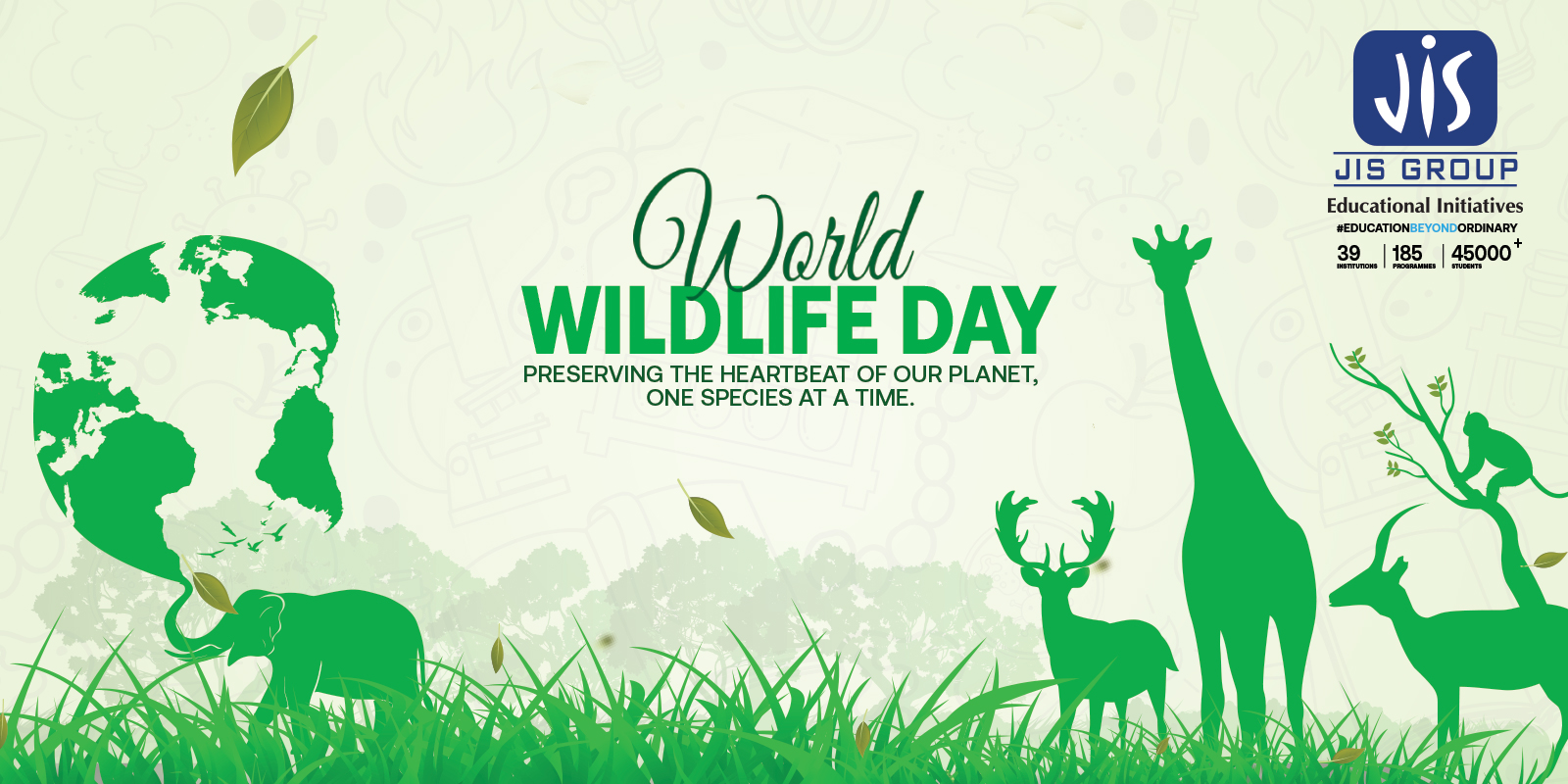World wildlife day
Category : Significant Days | Sub Category : Posted on 2024-03-02 06:02:35

March 3, World Wildlife Day 2024
Connecting People and Planet: Exploring Digital Innovation in Wildlife Conservation.
As the world celebrates World Wildlife Day on March 3rd, it offers us an opportunity to reflect on the rich biodiversity of our planet and the urgent need for its preservation.
The Conflict Continues, But Hope Remains
India`s wildlife is as diverse as its culture, ranging from the majestic Bengal Tiger prowling the dense forests of Ranthambore to the graceful Indian Elephant ambling through the lush greenery of Kerala`s national parks. According to the latest data from the National Tiger Conservation Authority (NTCA), India`s tiger population has seen a commendable rise from 1,411 in 2006 to 2,967 in 2018. This positive trend underscores the efficacy of concerted conservation initiatives such as Project Tiger. Yet, the threats of habitat loss, poaching, and human-wildlife conflict continue to loom large, demanding laser-focussed vigilance. Similarly, India is home to over 50% of Asia`s wild elephant population, yet escalating instances of human-elephant conflict pose a grave threat to both human lives and elephant habitats. As per the Wildlife Trust of India, between 2015 and 2020, India witnessed over 2,300 human deaths due to conflicts with elephants, emphasizing the urgent need for ethically sound and thoughtful resolution to mitigate such conflicts while ensuring the welfare of both humans and elephants.
Conservation efforts 2024: leveraging the power of AI and advanced technology
The good news is technology is revolutionizing wildlife conservation efforts, providing novel solutions to age-old problems. One such innovation is the use of artificial intelligence (AI) and machine learning algorithms to monitor and protect wildlife. Organizations like the Wildlife Institute of India (WII) have been at the forefront of deploying AI-powered tools for conservation. These technologies enable real-time monitoring of wildlife populations, allowing conservationists to track animal movements, detect poaching activities, and assess habitat health with unprecedented accuracy. AI-powered camera traps and drones are revolutionizing wildlife monitoring in India`s national parks and reserves. These devices can analyze vast amounts of imagery data, identifying individual animals and even predicting behaviors based on patterns. This data-driven approach not only enhances our understanding of wildlife dynamics but also informs targeted conservation interventions.
Collective Effort and Participation is Instrumental
Digital platforms and mobile applications are empowering citizen scientists and local communities to participate actively in wildlife conservation efforts. Platforms like `Wildlife Tracker` allow users to report wildlife sightings, enabling researchers to gather valuable data on species distribution and abundance across the country. Furthermore, the integration of geospatial technologies such as Geographic Information Systems (GIS) is facilitating landscape-level conservation planning. By overlaying spatial data on habitat maps, conservationists can identify critical corridors, buffer zones, and hotspots for conservation action. This holistic approach ensures that conservation efforts are strategic, evidence-based, and inclusive of local stakeholders.The impact of digital innovation extends beyond just data collection and analysis. It also plays a crucial role in raising awareness and generating public engagement in wildlife conservation. Social media campaigns, virtual reality experiences, and interactive websites enable people to connect with nature in ways previously unimaginable. Initiatives like `Wild India` leverage immersive storytelling and augmented reality to transport audiences into the heart of India`s wilderness, fostering empathy and appreciation for its unique biodiversity.
Moving Forward
Despite the strides made in digital innovation, challenges persist in scaling up these technologies and ensuring equitable access across all stakeholders. Issues such as data privacy, technological literacy, and infrastructure constraints need to be addressed to harness the full potential of digital tools for wildlife conservation in India. However, as we embrace digital solutions, it`s essential to recognize the inherent value of traditional knowledge and indigenous practices in conservation. Integrating indigenous wisdom with cutting-edge technology can lead to more holistic and culturally sensitive approaches to wildlife management. In the words of Mahatma Gandhi, "The greatness of a nation can be judged by the way its animals are treated." Let us strive to uphold this greatness by cherishing and protecting the magnificent grandeur of life around us.
Search
Categories
Recent News
- Why Mechanical Engineering Still Remains the Most Diversified Core Engineering Branch
- How AI, Data Science & Cybersecurity Are Transforming Modern CSE Education
- MBA vs PGDM: Which Course is Better in 2026? Fees, Value, Scope & Placement Comparison
- Top Skills Required for Computer Science Engineering Students in 2026: A Career-Focused Guide
- Civil Engineering Jobs in Kolkata: Salary Trends, Skills Required & Top Hiring Companies
- How Kolkata Is Adopting Green & Smart Construction Practices in 2026
- Electrical Engineering vs Mechanical Engineering: Choosing a Discipline That Shapes the Future
- Most In-Demand Engineering Branches to Choose in 2026